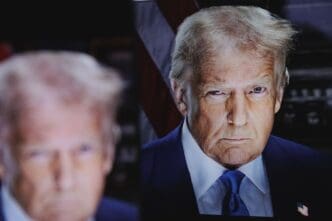Unemployment filings in Washington, D.C., saw a staggering rise to 1,780 for the week ending February 8, marking a 36% increase over the previous week. This uptick represents part of a broader trend, with nearly 4,000 workers having applied for unemployment insurance since President Trump assumed office. The surge began at the outset of the new year, as shown by figures from the Labor Department that have not been adjusted for seasonal influences.
Overall, close to 7,000 unemployment claims were filed in the first six weeks of the year—approximately 55% more compared to the same timeframe from last year. This sharp rise contrasts sharply with the national trend, where initial claims have remained relatively stable around a four-week moving average of 216,000, even slightly decreasing in recent months.
The increase in D.C. unemployment claims is linked to the Trump administration’s initiatives to reduce government staff levels, aided by the Elon Musk-led Department of Government Efficiency advisory board. ‘I expect it to go higher, and definitely we’ll be watching it very closely,’ remarked Raj Namboothiry, a senior executive from a workforce solutions company.
While it’s not precisely clear how much of the jobless spike arises from federal employees, many layoffs align with orders from the White House to dismiss probationary and other employees. Moreover, around 75,000 federal workers have taken buyout offers for early retirement. Washington, D.C. already had one of the highest unemployment rates in the country at 5.5% as of December 2024, secondary only to Nevada.
Raj Namboothiry noted that although the federal workforce reduction could challenge the regional labor market, it is unlikely to impact the national job situation significantly. ‘Yes, the numbers are definitely sizable,’ he observed. However, given that federal employees are spread across various regions and sectors, the broader market remains unaffected.
Despite the challenges, displaced federal employees might have favorable prospects in other sectors of the economy. Namboothiry pointed out opportunities for these workers due to a demand for their skill sets in certain industries. Similarly, economist Allison Shrivastava from the Indeed Hiring Lab highlighted that job seekers in fields like accounting may have better employment prospects compared to those in software development, emphasizing the role of individual sectors in re-employment outcomes.
The strategic reductions in the federal workforce initiated by President Trump signal a challenging yet potentially transformative period for Washington, D.C.’s job market. As layoffs continue, the focus will shift towards the adaptability of displaced workers across various economic sectors.








